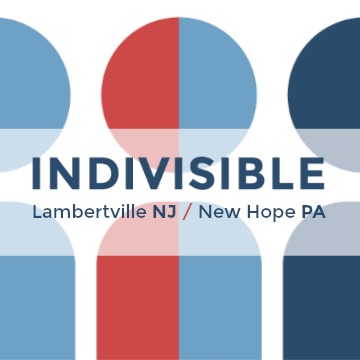Contributed by Deb Kline.
The slow, insidious decline in the power of the American Worker can no longer be ignored. Under Trump, The Department of Labor, established under the New Deal, has taken a carving knife to any form of protection killing off panels, agencies and regulations.
On May 1, International Workers Day, warehouse workers and grocery employees at Amazon and its subsidiary Whole Foods and gig workers for Instacart and Target-owned Shipt walked off the job. The workers — whose jobs have become more critical during coronavirus quarantines and stay-at-home orders — called for more personal protective equipment, professional cleaning services and hazard pay from their employers.
The protests didn’t include all company employees and were comparatively small, however media and social media coverage exponentially increased the impact. Other professions such as healthcare and transit workers lent their support.
The hostility to labor in favor of business by the Trump administration and the GOP in general is widely-recognized. Now, coupled with the plight of frontline workers across industries, ranging from career professionals to lower-wage workers exposed to, sick and dying of COVID-19, and others who are struggling due to business closures, the situation has reached a boiling point.
The decline in the status and power of the American worker didn’t begin with Trump, but it’s surely been exacerbated. The Department of Labor is the agency that is supposed to look out for the worker, yet evidence makes it abundantly clear that its current mission does anything but that as staff and boards are changed or disbanded, regulations are slashed, anti-labor rulings and executive orders chip away at any protections they might offer.
The Secretary of Labor position – a revolving door since the inauguration, is now headed by Eugene Scalia (yes, his daddy was a SCOTUS judge) since September 2019. As an attorney, Scalia handled many cases for businesses against employees and others, and repeatedly criticized for siding with large corporate interests against the working people. What a surprise.
The National Labor Relations Board (N.L.R.B.) has five members who are nominated by the president to serve staggered five-year terms. Trump’s N.L.R.B. has hamstrung union activism, with rulings favoring business and undermining vulnerable employees. See its rulings on McDonalds, Uber and graduate student employees. This long slide in the power of the worker gathered steam since the 80’s, when President Reagan notoriously declared the air traffic controller action illegal and fired more than 11,000 striking workers, hiring replacements. One of the Reagan administration’s lawyers in the case was Peter B. Robb, now general counsel of the N.L.R.B.
It’s been said as unions go, so goes inequality. The division of income among Americans has increasingly tilted to the richest 10 percent, and away from everyone else, as union membership has ebbed. (see Just the Facts: Unions in this issue). In a few cases, companies have actually stepped up and done right by their employees, Patagonia comes to mind, but in general, businesses hold most if not all the cards outspending unions in political contributions by 16 to one during the 2016 election.
Further, five panels that were created by law to advise the labor secretary on how to improve health, safety and whistleblower protections in nearly every facet of the workforce have been outright killed or mothballed. Set up under OSHA – the Occupational Safety and Health Administration, these committees include:
- Advisory Committee on Construction Safety and Health Last meeting: June 20, 2017
-
-
- Role: Has provided expertise on every OSHA standard in the construction industry for decades and must be consulted before the Department of Labor finalizes any construction industry-related rule-making, from ergonomic guidelines to work with hexavalent chromium.
- Pending issues: Preventing trucks from backing up and killing workers, a common cause of death at construction sites, and new telecommunication tower standards, prompted by workers falling to their deaths while working on the towers.
-
- National Advisory Committee on Occupational Safety and Health – Last meeting: Nov. 15, 2016.
-
- Role: Advises on issues from reducing illness and injury in poultry line assembly to blood-borne pathogens, working closely with the National Institute for Occupational Safety and Health.
- Pending issues: Regulations to protect temporary workers and emergency responders
- Federal Advisory Council on Occupational Safety and Health – Last meeting: Sept. 8, 2016
-
- Role: Developed federal training guidelines, adopted by OSHA, for workers’ health and safety, and helped to ensure that federal contractors work with unions on developing safe environments for such work as refueling nuclear submarines.
- Pending issues: Recommendations to prevent workers at federal sites in Florida from Zika exposure.
- Maritime Advisory Committee for Occupational Safety and Health – Last meeting: Aug. 10, 2016
- Role: Provides advice and technical expertise on health and safety issues in shipyards, the longshore industry and commercial fishing vessels. Since the committee was created, fewer maritime workers have died annually of asphyxiation or drowning.
- Pending issues: Implementation of a new, more aggressive beryllium standard that will take effect in May. Also, guidelines to prevent lead and other toxic exposure during welding.
- Whistleblower Protection Advisory Committee – Last meeting: April 26, 2016
- Role: Developed a first-of-its kind guideline for how employers in 22 industries should address whistleblower issues and created a forum at its meetings for the public to bring up issues they felt had been unfairly dealt with.
- Pending issues: Whistleblower protection issues within the railroad industry, improving the relationship between OSHA’s health and safety programs and its whistleblower protection programs.
Additional Resources:
U.S. Senate Committee on Health, Education, Labor and Pensions – Legislation
U.S. House Committee on Labor and Education – Bill Status and Tracking
Sources
https://www.washingtonpost.com/technology/2020/05/01/amazon-instacart-workers-strike/
https://www.nytimes.com/interactive/2020/02/19/magazine/labor-law-unions.html
https://www.propublica.org/article/trumps-labor-department-eviscerates-workplace-safety-panels



